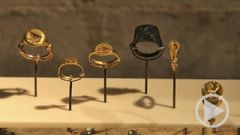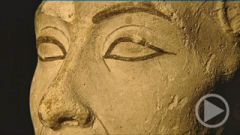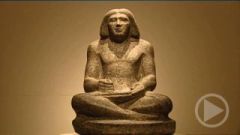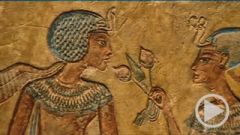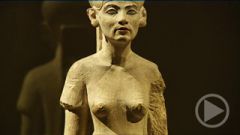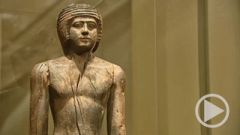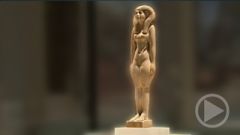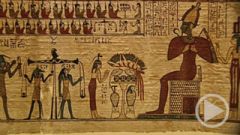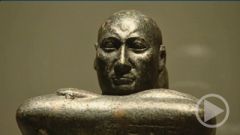- Home
- »
- Germany
- »
- Berlin
- »
- Museum Island
- »
- The Berlin Egyptian Museum
- »
- The Berlin Egyptian Museum - Statue of Amenhet III.
Statue of Amenemhat III.
Statue of Amenemhat III.
Carved from dark grey granite, this figure is larger than life. But even though it's taller than your average human being, the pose conveys humility. The hands rest on the projecting royal kilt in an attitude of prayer. We know this man is a king because he's wearing the characteristic striped royal head-dress, and because there would originally have been a serpent emblem, a rearing uraeus, on his forehead. The sacred snake was believed to guard against evil. By showing the king towering above ordinary mortals and yet praying to the gods, the statue conveys that the king's position is somewhere between human and divine, between heaven and earth.
The facial features appear human, individual, though they were re-worked at a later date. Note the rough finish in the centre of the face and compare it to the sides of the cheeks, which are polished. This was where the original face was re-carved to resemble a later king. The ruler who was originally portrayed is named in an inscription on the belt buckle. The hieroglyphs read "Ni-maat-Ra“, and that's the late 12th dynasty pharaoh Amenemhat the Third, who ruled around 1800 B.C. However, on the side of the back pillar that supports the statue is the name of King Merenptah, son and successor of Rameses the Second, who ruled around 1200 B.C. In other words, the statue was updated some 600 years after it was first carved. It was given a new face, and an inscription was added, but the original inscription on the front was allowed to stand. The Ramesside kings, that is, the kings in the age of Rameses the Great, were trying to show that they saw themselves in the tradition of their great Middle Kingdom predecessors. Here, the new and modern harks back to the old, and the present and the future are tied in to the past.


